AWS Solutions Architect Associate Certification
Designing for Security
MegaSection Introduction The Design for X Portion
Welcome everyone! I’m Michael Forrester, and in this lesson, I will introduce the Design for X portion—the second half of this course. In this section, we focus on designing systems with specific attributes that align with the AWS Well-Architected Framework.
What Is Design for X?
Design for X means creating solutions with an emphasis on key attributes. In this lesson, these attributes are:
- Security
- Reliability
- Performance
- Cost Optimization
These core aspects are fundamental to the AWS Well-Architected Framework. For instance, designing for security and reliability is critical for mission-critical environments.

Four Specific Domains
The Solutions Architect Associate course covers the following four domains:
- Security
- Reliability
- Performance (also known as Performance Efficiency)
- Cost Optimization
While the full AWS Well-Architected Framework includes six pillars (such as Operational Excellence and Sustainability), this certification specifically focuses on the four domains listed above.
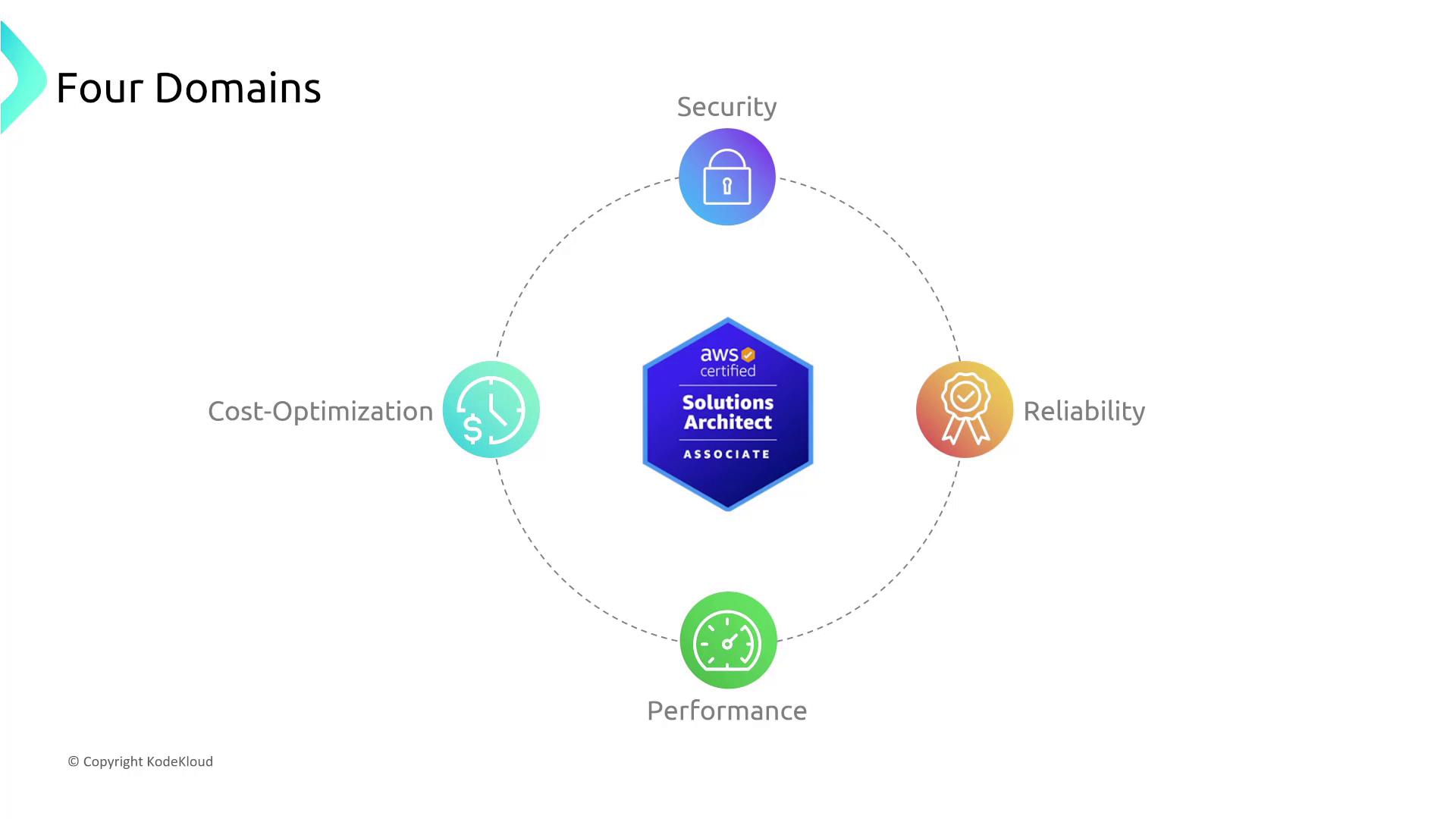
Overview of the AWS Well-Architected Framework
The AWS Well-Architected Framework consists of six pillars:
- Security – Securing workloads, infrastructure, and establishing shared responsibilities between AWS and the customer.
- Reliability – Ensuring fault tolerance, leveraging high availability, disaster recovery plans, and resiliency.
- Performance Efficiency – Right-sizing resources, scaling appropriately, and avoiding over- or under-provisioning.
- Cost Optimization – Utilizing the right service efficiently to control costs.
- Operational Excellence – Emphasizing best operational practices.
- Sustainability – Focusing on environmentally friendly and sustainable solutions.
Note
While Operational Excellence and Sustainability are integral parts of the framework, they are considered out of scope for the Solutions Architect Associate exam. These pillars are more relevant in cloud and system operations certifications.
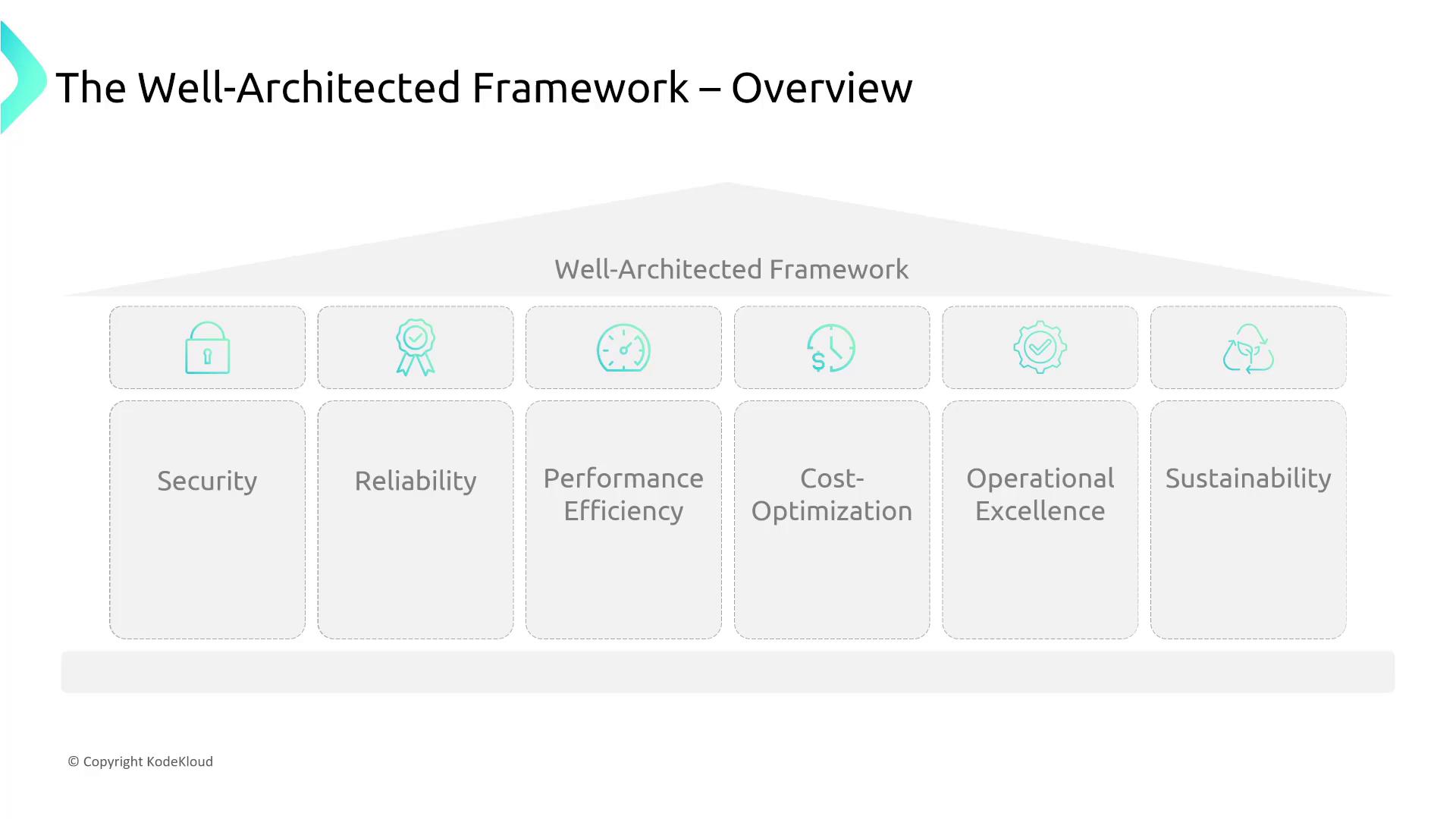
Course Structure and Objectives
This mega section is organized into five subsections:
- Security
- Reliability
- Performance Efficiency
- Cost Optimization
- Design Challenge
For each of the first four pillars, you will encounter:
- A brief overview of the respective pillar.
- General design principles specific to that pillar.
- Detailed discussions on enhancing attributes like security for networking, storage, and compute services.
Often, AWS’s built-in features provide a strong foundation for security, so the focus shifts to identifying and leveraging available settings to further improve each service's security posture. Additionally, exam-style questions and detailed diagrams will help reinforce these concepts for each pillar.
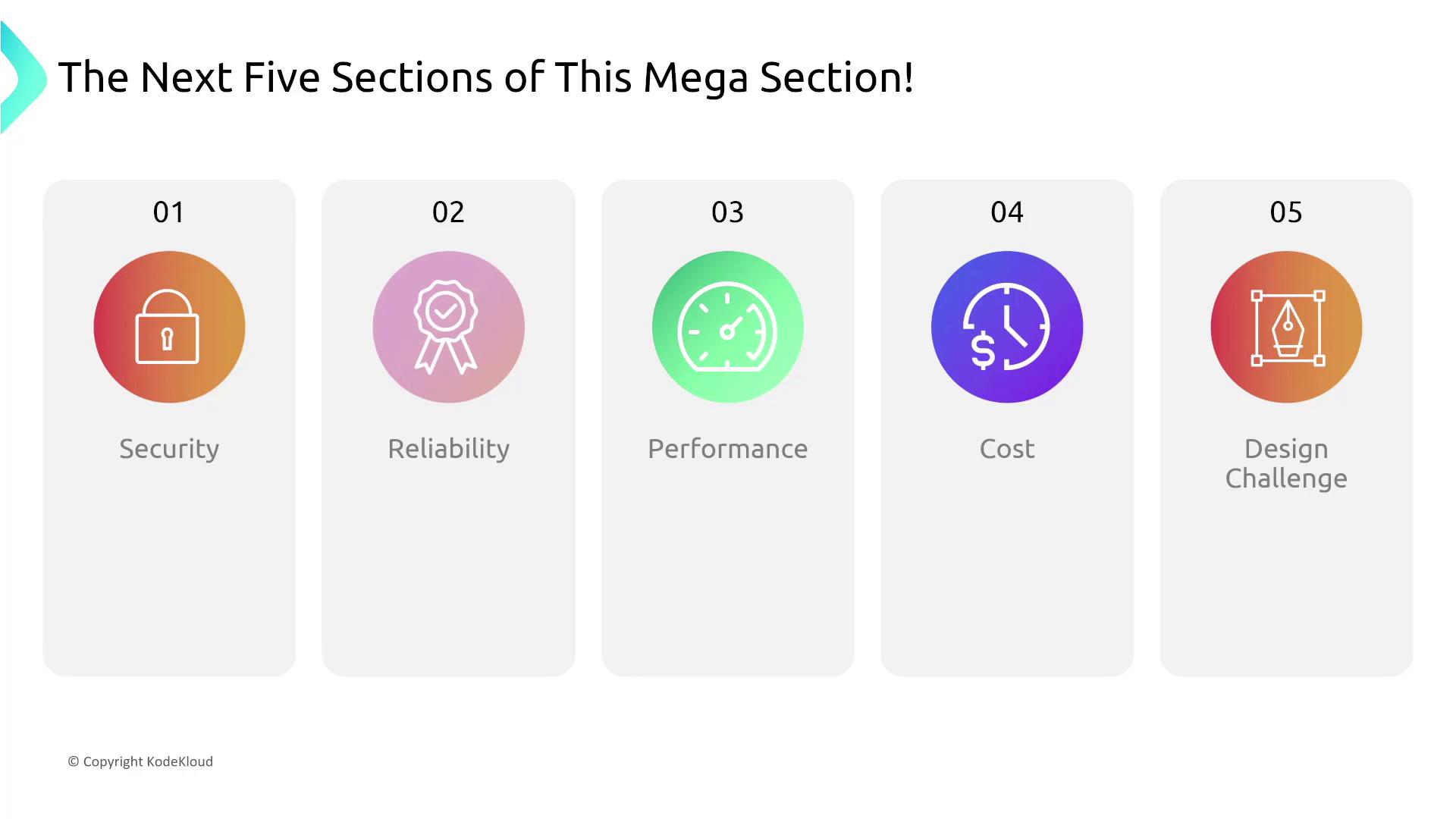
Agenda for Each Domain
For each domain—Security, Reliability, Performance Efficiency, and Cost Optimization—the following agenda will be covered:
- An initial overview and review of general principles.
- Examination of how these principles are applied across various service categories (such as networking, storage, and compute).
- A comprehensive design challenge that integrates all four pillars, enhancing your exam readiness.
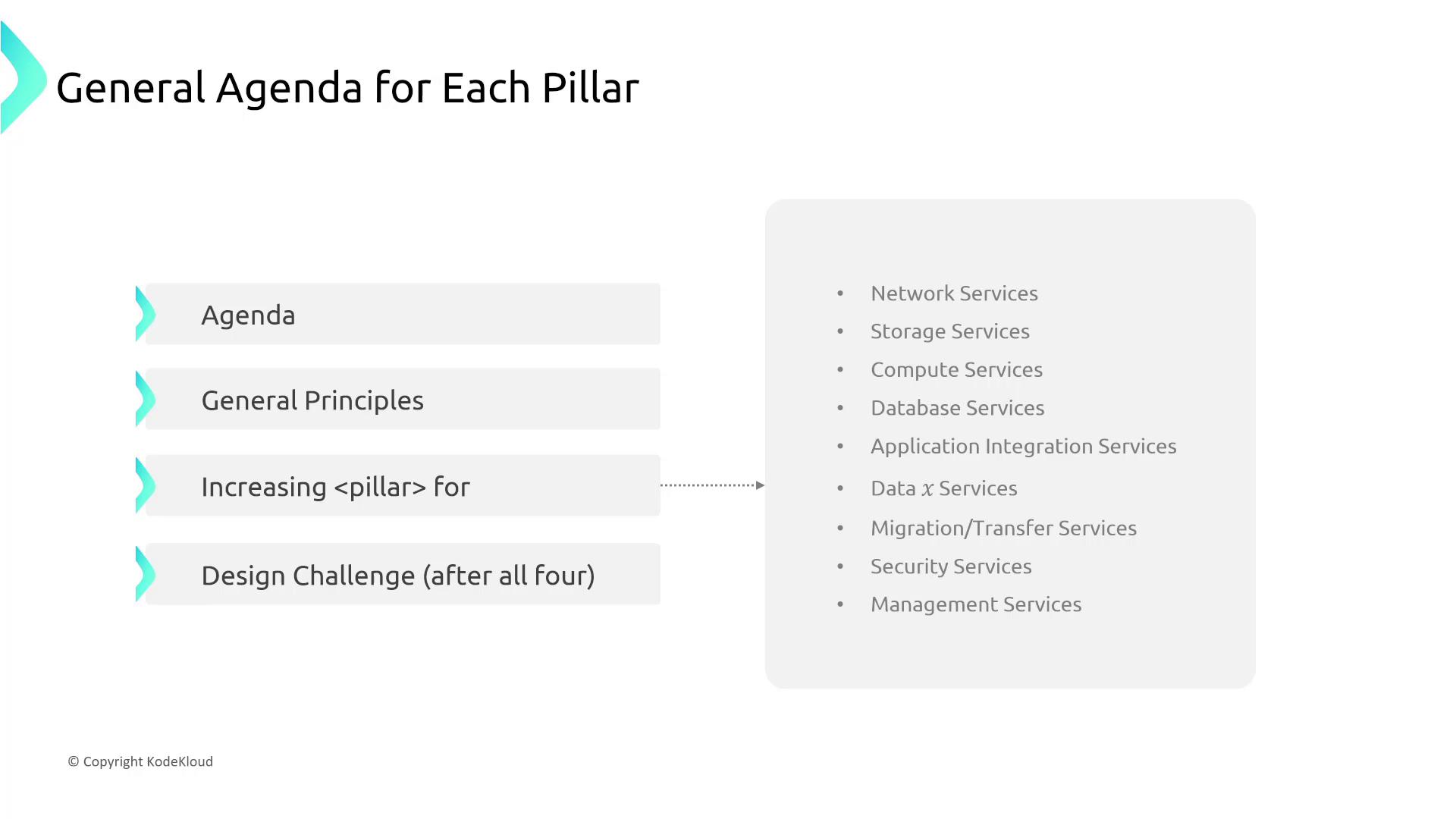
Preparing for the Design Challenge
As you progress through the course, take detailed notes—every design decision, principle, and exam question is designed to enhance your expertise. The culminating design challenge will combine all aspects covered in the course:
- A summary of design principles for Security, Reliability, Performance Efficiency, and Cost Optimization.
- Walkthroughs of specific challenges in each domain.
- An integrative challenge that combines these concepts into a cohesive architectural solution.
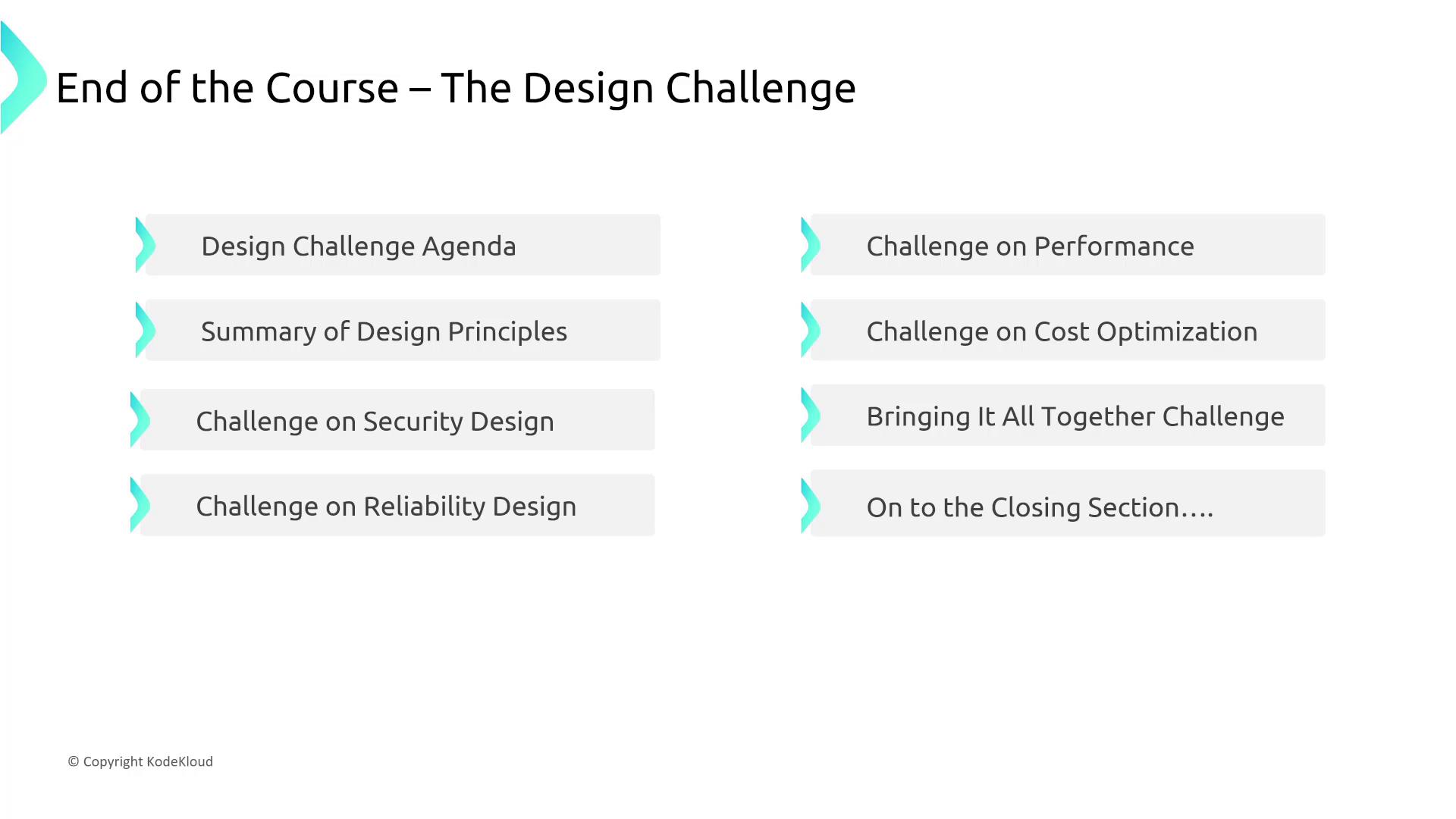
Summary
In summary, this lesson teaches you how to design as a Solutions Architect by focusing on four key pillars derived from the AWS Well-Architected Framework:
- Security
- Reliability
- Performance Efficiency
- Cost Optimization
Throughout the course, you will delve into domain-specific questions for various AWS services—whether it's applying security measures to VPCs, EC2, or EBS—and explore how these services interact through detailed diagrams and design challenges. This targeted approach is designed to prepare you for the AWS certification exam, ensuring you gain both the theoretical understanding and practical skills needed for success.
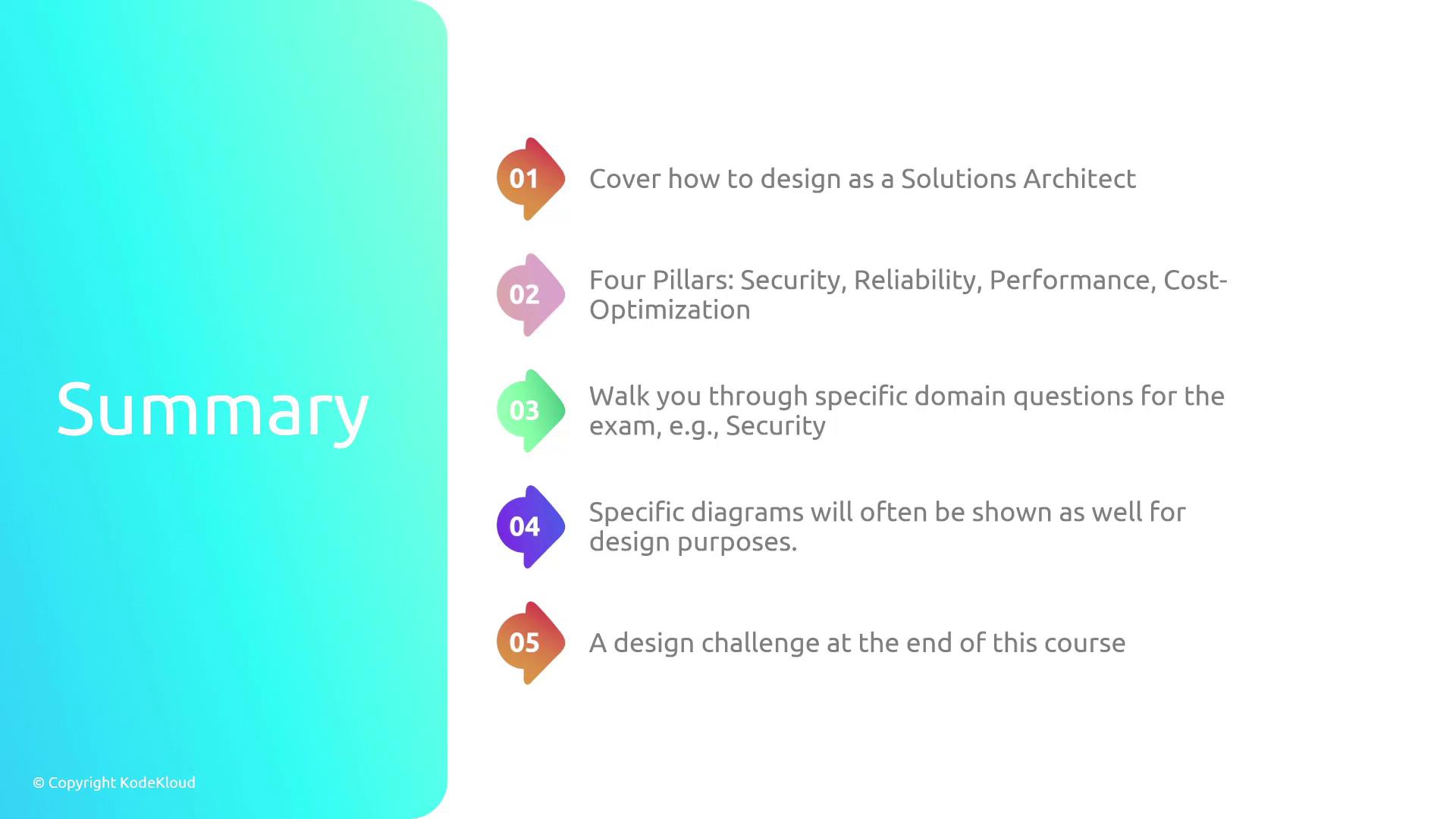
Go forth and conquer this mega section. We look forward to seeing you apply these design principles in the upcoming design challenges.
Watch Video
Watch video content